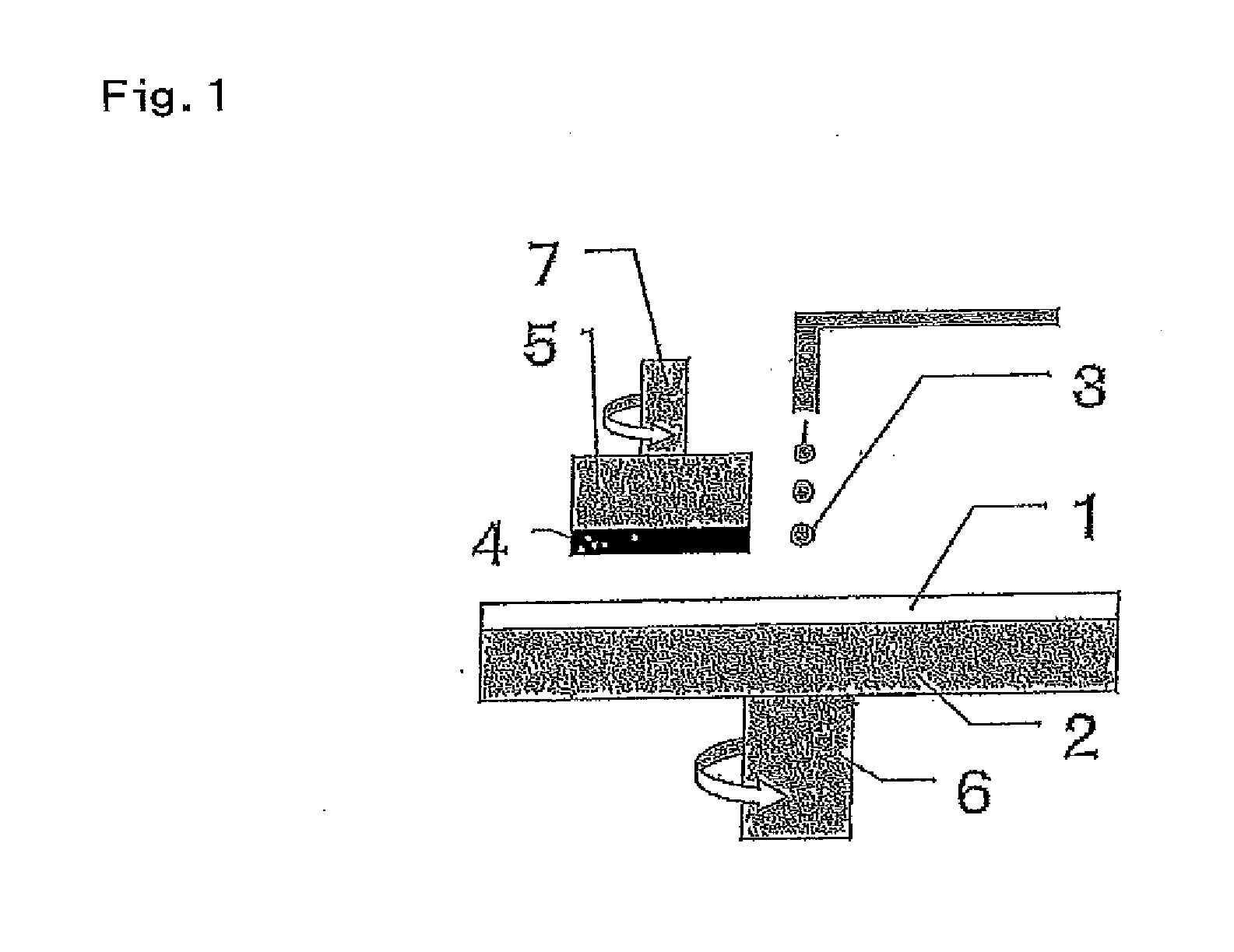Polishing pad
- Summary
- Abstract
- Description
- Claims
- Application Information
AI Technical Summary
Benefits of technology
Problems solved by technology
Method used
Image
Examples
production example 1
Synthesis of Prepolymer
[0224]To a vessel were added 1229 parts by weight of toluene diisocyanate (a mixture of toluene 2,4-diisocyanate / toluene 2,6-diisocyanate=80 / 20), 272 parts by weight of 4,4′-dicyclohexylmethane diisocyanate, 1901 parts by weight of polytetramethylene ether glycol having a number average molecular weight of 1018, and 198 parts by weight of diethylene glycol, and the mixture was allowed to react at 70° C. for 4 hours to obtain an isocyanate-terminated prepolymer A (NCO concentration: 2.22 meq / g).
[0225]Similarly, 204 parts by weight of toluene diisocyanate (a mixture of toluene 2,4-diisocyanate / toluene 2,6-diisocyanate=80 / 20) and 596 parts by weight of polytetramethylene ether glycol having a number average molecular weight of 1018 were charged into a vessel, and the contents were allowed to react at 70° C. for 4 hours to obtain an isocyanate-terminated prepolymer B (NCO concentration: 1.48 meq / g).
example 1
[0226]To a reaction vessel were added 100 parts by weight of the isocyanate-terminated prepolymer A and 2.4 parts by weight (0.080 equivalent of hydroxyl group per 1 equivalent of isocyanate group) of ethylene glycol monophenyl ether, and the contents were mixed in a planetary mixing and defoaming apparatus, and defoamed to obtain a liquid mixture. After that, 24.1 parts by weight of 4,4′-methylenebis(o-chloroaniline) (IHARACUAMINE-MT, manufactured by Ihara Chemical Industry Co., Ltd.) which had been melted at 120° C. was added to the liquid mixture, and the resulting mixture was stirred and defoamed in a planetary mixing and defoaming apparatus to prepare a polyurethane raw material composition. The composition was poured into an open mold (800 mm×800 mm in length and width, and 2.5 mm in depth) (casting vessel) and post curing was performed at 100° C. for 16 hours to obtain an unfoamed polyurethane resin sheet. The surface of the sheet was then buffed with a buffing machine (manuf...
PUM
| Property | Measurement | Unit |
|---|---|---|
| Speed | aaaaa | aaaaa |
| Speed | aaaaa | aaaaa |
| Equivalent mass | aaaaa | aaaaa |
Abstract
Description
Claims
Application Information
 Login to View More
Login to View More - R&D
- Intellectual Property
- Life Sciences
- Materials
- Tech Scout
- Unparalleled Data Quality
- Higher Quality Content
- 60% Fewer Hallucinations
Browse by: Latest US Patents, China's latest patents, Technical Efficacy Thesaurus, Application Domain, Technology Topic, Popular Technical Reports.
© 2025 PatSnap. All rights reserved.Legal|Privacy policy|Modern Slavery Act Transparency Statement|Sitemap|About US| Contact US: help@patsnap.com

